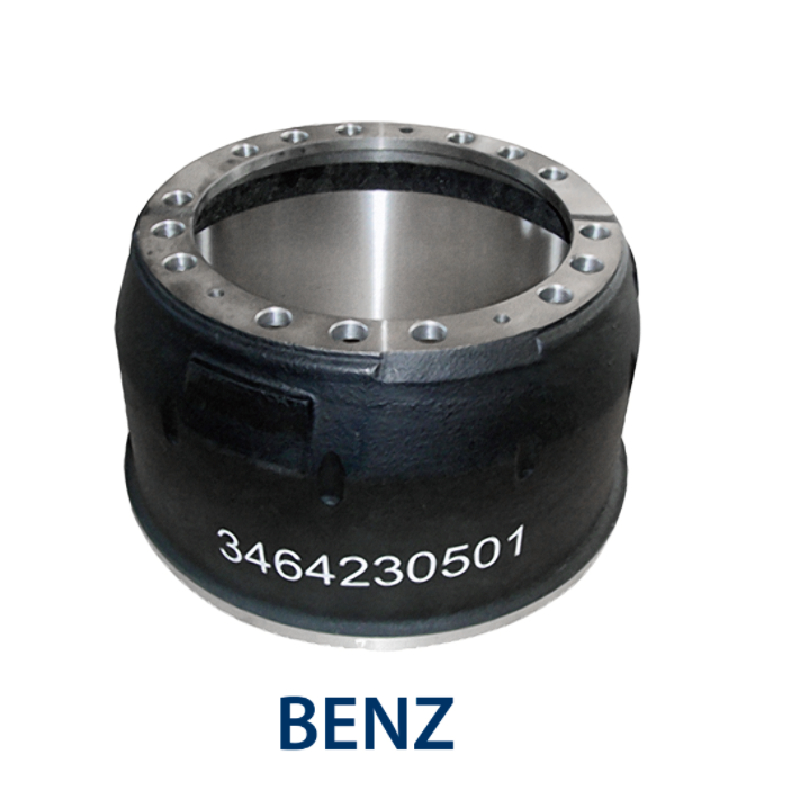Sep . 23, 2024 22:58 Back to list
Overview of Brake Drum Production Methods and Techniques in Manufacturing Industry
The Brake Drum Manufacturing Process
Brake drums are critical components of a vehicle's braking system, serving as crucial parts that help slow down or stop a vehicle safely. The manufacturing process of brake drums involves several key steps that ensure quality, durability, and performance. This article will provide an overview of the essential stages in the brake drum manufacturing process, highlighting the materials used, the methods of production, and quality control measures that ensure the final product meets industry standards.
Material Selection
The manufacturing of brake drums begins with the selection of appropriate materials. The primary material used in brake drum production is cast iron due to its excellent thermal properties, strength, and durability. Cast iron can withstand high temperatures generated during braking and provides good wear resistance. In some cases, manufacturers may also use composite materials or aluminum for lightweight applications, particularly in performance vehicles where reducing weight is critical.
Melting and Pouring
Once the material is selected, the next step is to melt the cast iron. This process occurs in a furnace, where raw iron is heated to a temperature exceeding 1,200 degrees Celsius. The molten iron is then poured into pre-prepared molds to form the brake drum shape. The molds are typically made of sand or metal and are designed to create the inner and outer profiles of the drum. Proper pouring techniques are essential to avoid defects such as air bubbles or unwanted inclusions within the cast iron.
Cooling and Solidification
After pouring, the molten iron must cool and solidify. This cooling process is critical, as it affects the mechanical properties of the brake drum. The cooling time can vary depending on the size and thickness of the drum. Proper cooling allows for the formation of a strong microstructure in the cast iron, enhancing its durability. In some cases, manufacturers may employ controlled cooling methods to optimize the properties further, such as water cooling or heat treatment processes.
Machining
brake drum manufacturing process

Once the brake drums have fully cooled and solidified, they undergo a machining process to achieve precise dimensions and a smooth finish. Machining operations typically include turning, milling, and grinding. During this phase, the outer diameter, inner diameter, and braking surface are machined to ensure they meet specific tolerance levels. The machining process is crucial as it directly impacts the performance of the brake drum, including its ability to provide adequate braking force and maintain efficient heat dissipation.
Surface Treatment
Following machining, the brake drums may undergo surface treatment processes such as shot blasting or coating. Shot blasting is used to remove any surface imperfections and to improve the bonding surface for subsequent coatings. Coatings, such as paint or anti-corrosion treatments, are applied to enhance the drum's resistance to environmental factors such as moisture and road debris, which can lead to rust and degradation of performance over time.
Quality Control
Quality control is an integral part of the brake drum manufacturing process. Throughout the production stages, various tests and inspections are conducted to ensure the drums meet safety and performance standards. Common quality control measures include dimensional inspections using calipers and gauges, hardness testing to verify material properties, and non-destructive testing methods like ultrasonic or X-ray inspections to identify any internal flaws.
Packaging and Distribution
Once the brake drums pass all quality checks, they are packaged for distribution. Proper packaging is essential to prevent damage during transportation and handling. Brake drums are often bundled together and secured with protective materials to ensure they arrive at retailers or automotive manufacturers in perfect condition.
Conclusion
The manufacturing process of brake drums is a complex journey that involves careful material selection, precision machining, and rigorous quality control. Each step in the production process plays a pivotal role in ensuring that the final product meets the performance and safety standards required in the automotive industry. As technology continues to evolve, manufacturers are likely to adopt more advanced techniques and materials, further improving the efficiency and performance of brake drums in vehicles. The dedication to quality and safety in brake drum production ultimately contributes to safer driving experiences for everyone on the road.
-
HINO Industrial Efficiency-Jiangsu Hino Industrial|Productivity Optimization&Cost Reduction
NewsJul.12,2025
-
HINO-¡Ң���ຽ��е��������˾|Advanced Industrial Solutions&Energy Efficiency
NewsJul.12,2025
-
Premium Brake Drum Iveco – Durable Drum Brake Drum & Brake Shoe Solutions
NewsJul.08,2025
-
High-Performance Brake Drum Liza for Enhanced Safety Reliable Drum Brake Drum & Brake Shoe Solutions
NewsJul.08,2025
-
High-Quality Brake Drum MAZ – Durable Drum Brake Drum & Brake Drum and Brake Shoe for Optimal Performance
NewsJul.07,2025
-
High-Quality Brake Drum Kamaz for Reliable Performance Durable Drum Brake Drum & Brake Shoes
NewsJul.07,2025
